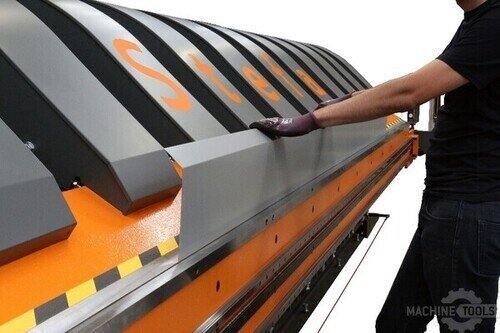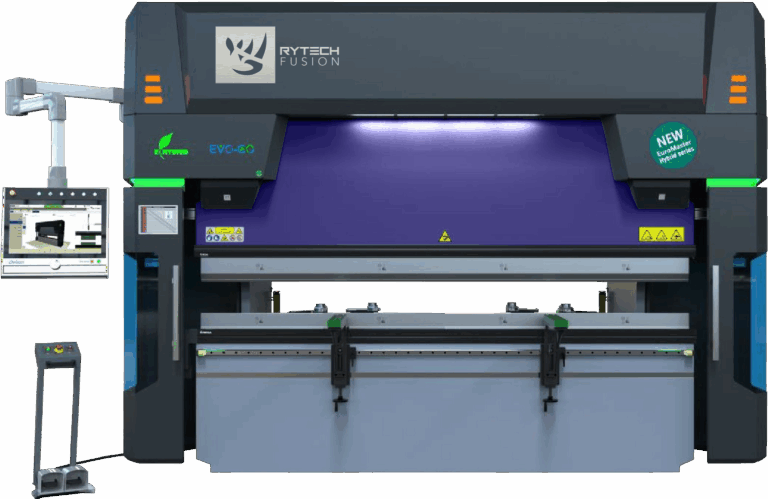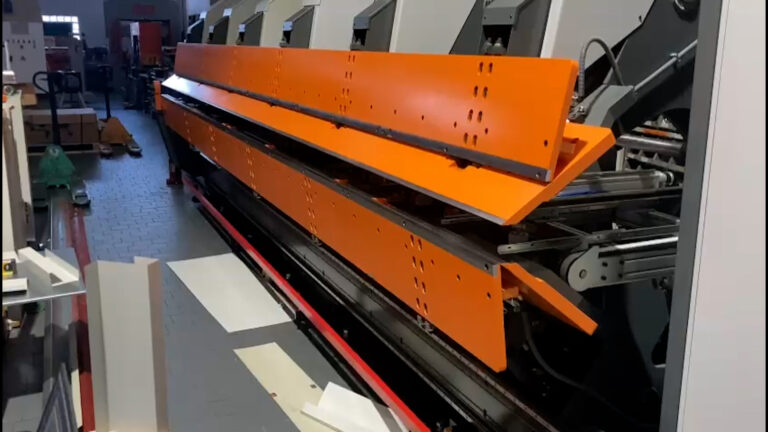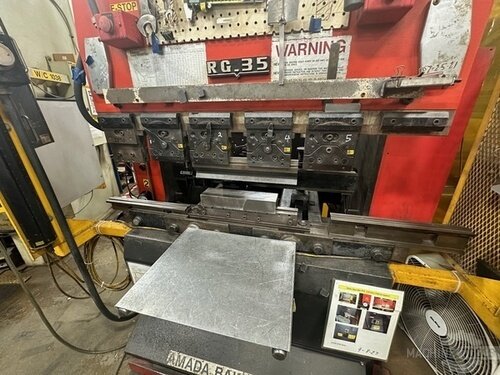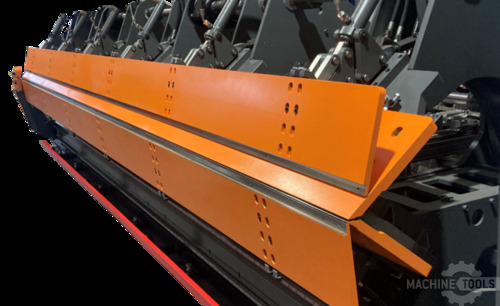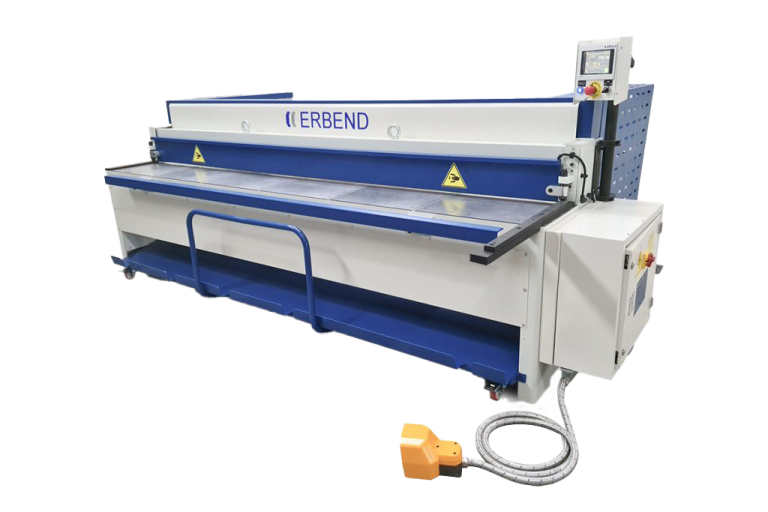I’ve spent my career helping metal fabricators and roofing professionals get more from their equipment—whether that means solving a nagging production problem, recommending a strategic upgrade, or simply being a sounding board when it’s time to scale. My journey began on the south side of Chicago, where I learned firsthand the value of listening to customers and matching the right machine to the right job. Today, as Regional Sales Executive at Mac-Tech, I’m fortunate to work with clients across North America, guiding them through the fast-evolving landscape of CNC folders, shears, slitters, roll formers, and more. One of the most common—and costly—issues I see in roofing is marring on coated materials. Let’s dive into how to prevent it and maximize your CNC folder’s performance.
Understanding the Impact of Marring on Coated Roofing Materials: Insights from the Field
Roofing panels and trim are increasingly finished with high-performance coatings—polyester, PVDF, plastisol—to meet modern durability and aesthetic demands. But these coatings are only as good as the care taken during fabrication. Even minor scratches, scuffs, or marring from folding operations can compromise corrosion resistance, void warranties, and create expensive rework or scrap. I’ve seen entire batches rejected due to cosmetic defects that could have been avoided with the right tooling and machine setup. In competitive markets, surface quality isn’t just a nice-to-have—it’s non-negotiable.
Evaluating CNC Folder Performance: Lessons Learned from Coil-Fed Production
Many customers transition from manual brakes to CNC folders to keep up with coil-fed, high-throughput production. The promise: faster cycles, repeatable accuracy, and less manual handling. But with faster speeds and automated handling comes a new set of risks—especially for coated materials. The best CNC folders are designed with anti-marring features from the ground up: smooth, polished contact surfaces, smart part supports, and programmable clamping pressures. In my experience, the right machine can reduce surface defects by 50% or more, especially when paired with operator training and regular maintenance.
Identifying Sources of Marring in Slitting, Forming, and Folding Operations
Marring can sneak in at any stage—slitting, forming, folding, or even during transfer between machines. Common culprits I’ve encountered include:
- Worn or dirty tooling (especially lower beams and clamping fingers)
- Excessive clamping or bending pressure
- Misaligned sheet guides or supports
- Inadequate film or paper interleaf protection
- Sharp transitions between conveyors and folder beds
A thorough process audit—something I often conduct on-site—can pinpoint the source. Sometimes the fix is as simple as a new set of non-marking jaws; other times, a machine upgrade or retrofit is warranted.
Key Machine Features That Enhance Efficiency and Reduce Waste
Not all CNC folders are created equal. Features I recommend for roofing applications include:
- Soft-touch or non-marring clamping technology: Prevents surface defects on painted or coated stock.
- Servo-driven folding beams: Provide precise, repeatable bends with programmable pressure adjustment.
- Automatic tool changers: Reduce setup times and operator handling.
- Integrated part supports and return systems: Minimize manual contact and improve workflow.
- Tight integration with upstream/downstream equipment: Ensures smooth transitions and reduced handling damage.
Investing in these features pays off with less scrap, tighter tolerances, and higher throughput—especially as labor costs rise.
Upgrading Your CNC Folder: What to Look For Based on Your Fabrication Needs
Whether you’re fabricating standing seam panels, gutters, or custom trims, the right folder should match your production mix and volume. Key considerations I walk through with customers:
- Material range: Can the folder handle your thickest and thinnest gauges without marring?
- Part complexity: Do you need double-folding capability, or is a combi-beam sufficient?
- Automation level: Will automated part return or stacking boost your line’s ROI?
- Integration: Does the folder communicate seamlessly with your slitter, decoiler, or roll former?
- Future-proofing: Will you be ready for new coatings or profiles down the road?
A tailored demo or ROI analysis is often the best way to compare options—something I’m always happy to arrange.
STEFA VH315
Optimizing Roll Forming and Folding Speed Without Compromising Surface Quality
Speed is essential, but not at the expense of finish. Modern servo-driven folders and roll formers allow for fine-tuned acceleration, deceleration, and clamping—reducing the risk of marring during rapid cycling. In some cases, upgrading control software or adding anti-scratch liners can double your output while maintaining finish quality. I’ve helped shops move from 100 to 250 panels per shift just by dialing in these parameters and upgrading legacy components.
Practical Recommendations for Preventing Marring in Everyday Production
Here are some proven tips from the field:
- Regularly inspect and clean all contact surfaces—including beams, fingers, and supports.
- Use soft or replaceable jaw covers for sensitive finishes.
- Store and handle blanks with care—avoid stacking painted material directly.
- Train operators on correct loading and unloading techniques to minimize dragging.
- Monitor and adjust clamping pressure based on material and coating type.
- Schedule preventative maintenance for all forming and folding equipment.
Simple habits like these can cut rework and scrap rates dramatically.
Real-World Success Stories: How Customers Improved Performance with Expert Guidance
One of my customers, a Midwest commercial roofer, was struggling with high scrap rates due to scratches on PVDF-coated trim. After a site visit, we identified the issue: worn lower beam pads and excessive clamping force on their folder. By retrofitting non-marring tooling and updating their operator training, they cut scrap by 40% in the first month. Another client upgraded to a servo-driven double folder with automatic return, tripling their daily output for custom fascia panels—all while improving surface quality and reducing labor.
Next Steps: Tailored Solutions for High-Quality, High-Efficiency Metal Fabrication
Every shop is different. Whether you’re running a single manual brake or a fully automated coil-fed line, the right combination of equipment, tooling, and process know-how can take your production to the next level. At Mac-Tech, we offer hands-on demos, process audits, and ROI analyses to help you make the best investment for your business—no guesswork, just results.
Frequently Asked Questions
When is the right time to upgrade a roll former or folder?
If you’re seeing rising scrap rates, struggling to meet tolerances, or losing jobs due to finish quality, it’s time to evaluate an upgrade. Also, when your throughput can’t keep up with demand, or labor costs are eating into profits, new automation can quickly pay for itself.
How do servo-driven folders compare to hydraulic systems?
Servo-driven folders offer faster setup, more precise bends, lower maintenance, and programmable pressure—key for protecting coated materials. Hydraulics are robust but can be less consistent and slower for high-mix, high-volume shops.
What’s the difference between a combi-beam and a double folder?
A combi-beam folder uses interchangeable tooling for flexibility, ideal for shops making a variety of profiles. Double folders can bend both up and down without flipping the part, doubling speed for complex shapes—especially valuable in high-volume roofing production.
What are signs a roll forming line is no longer cost-effective?
Frequent downtime, excessive manual adjustments, high scrap, and inability to run new profiles or coatings are red flags. If you’re spending more on repairs than output, it’s time to consider a new line.
How do I minimize marring when switching between material types?
Use dedicated tooling for each coating type, clean contact surfaces between runs, and adjust clamping pressures based on material specs. Automated folders make these changeovers faster and more reliable.
Can I retrofit non-marring features to my existing folder?
In many cases, yes—options include soft jaw covers, upgraded fingers, and pressure control kits. I’m happy to evaluate your machine and recommend the best path forward.
If you’re ready to boost your productivity, reduce waste, and deliver flawless coated metal roofing products, let’s talk. I’m always available for a walkthrough, demo, or to quote your next upgrade. Reach out anytime at pat@mac-tech.com or 414-232-7929—or fill out the form below and we’ll connect soon.
Get Weekly Mac-Tech News & Updates

